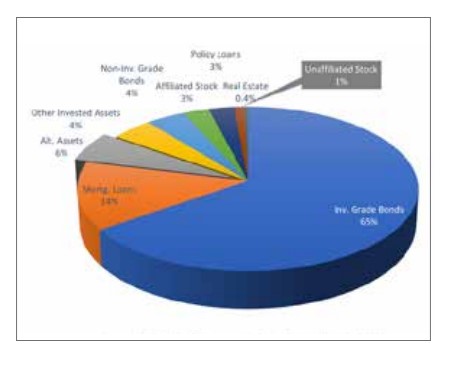Changing financial tides could hit IUL cap rates

Indexed universal life (IUL) cap rates have reached low tide, which makes long-term projections much less attractive for current and future policyholders.
It is not hyperbole to say “every IUL policy sold in the last 10 years illustrates lower today than it did when it was sold,” assuming maximum illustrative rates. Some will argue this, but that does not provide answers about the future of permanent products, including whole life, IUL and universal life (UL).
Interest rates have been trending down for decades. When will interest rates, index caps and policy crediting reverse course?
Here are two of the most common distractions regarding crediting.
1 – Short-term interest rates
Short-term interest rates refer to the federal funds rate set by the Federal Open Market Committee. Rising interest rates do not translate to higher cap rates in the short term because higher interest (and volatility) increases the cost of options that insurers buy to create the cap and floor that define a typical S&P 500 index account. The easiest way to validate the disconnect between interest rates and index caps is to look at data from the last rising interest rate cycle from 2016 to 2019.
IUL caps versus increasing interest rates
The chart above shows that eight interest rate increases had almost no impact on cap rates. At the end of the cycle in 2019, interest rates were still increasing and caps were still going down. To borrow an analogy from a colleague, “short-term interest rates are just waves splashing against the Titanic.”
A corporate bond index is a better barometer for potential changes in cap rates. If increases are sustained month over month, the yields will show up as profits in general accounts (GAs). At the 2018 peak, you can see an inflection point where AAA yields slightly alter the downward trajectory of caps, but not enough to reverse course.
2 – Index options
This is one of the great head-fakes in product marketing. Life Insurance 101 taught us that all UL products, including IUL, are general account products. Therefore, by definition, IUL premium dollars are invested in the carrier’s GA portfolio, not an index fund.
Index accounts are shadow accounts. They are a sandbox of equities where marketers can model hypothetical results using various caps, floors, spreads, indexes, derivatives, loan strategies, volatility controls, etc. that are not directly associated with the investment of client money.
General account assets as percentage of total
Why does the industry devote so many resources to the index game? Perhaps the steady introduction of new indexes has become a marketing platform of its own. It is a convenient distraction where increasingly complex market schemes are molded for point of sale and then unceremoniously eroded by the reality of general account investments.
When the index honeymoon is over, the long-term performance of insurance products is tethered to the insurer’s GA, specifically net investment yield, by a leash that has been getting shorter and shorter.
The chart below makes it clear that net investment yield is the ugly truth behind product performance, which also makes a good starting point for better analysis.
ALIRT life industry composite – Net investment yield
In general, net investment yield is the source of funds that carriers use to determine product budgets (plus whatever the carrier is willing to commit to new business acquisition). It is no surprise that caps and crediting have followed this same trajectory.
So what drives net investment yield? Investment grade bonds make up 65% of yield potential. The good news is bond yields are on the rise.
A 50/50 mix of Aaa and Baa corporate bond yields have risen from 3.12% to 5.48% in 2022, according to FRED, the Federal Reserve Bank of St. Louis. The steep climb in yields may offset the increased cost of options.
So far, the industry has not seen a wave of fresh cap decreases that many analysts projected. Instead, fixed crediting accounts have begun to increase rates, which could lead to increases in IUL cap rates in the next six months or more.
Insurers with a diversified mix of assets have fared better than those who rely too heavily on bonds. The table below underscores how small alternative investments can have a disproportionate impact on GA yield:
5-Year averages (2017-2021)
Alternative investments are private equity funds, hedge funds, joint ventures and other high-risk/high-return investments. Insurers’ investments in alternative assets increased 23% from 2017 to 2021 as a supplement to low bond yields, according to ALIRT Insurance Research.
The beginning of this article questioned the future direction of long-term interest rates and policy crediting. We can only speculate, but some economists think fundamental macroeconomic conditions are changing. There are signs that the past three decades of deflation and decreasing interest rates bottomed out in 2021.
Significant changes in demography and globalization may support a full-scale reversal that is already underway. Specifically, an aging and shrinking work force and political opposition to global trade may drive inflation and interest rates for the foreseeable future.
If the forces that pushed portfolio yields down for so long are reversing, it is logical to think yields themselves will go in the other direction as well.
I am optimistic that the new economic environment will bring higher caps and crediting to index-based insurance products by the first half of 2023.
Kyle G. Mills is a senior life analyst at Schechter. He may be contacted at [email protected].
Kyle G. Mills is a senior life analyst at Schechter. He may be contacted at [email protected].









Serve your clients’ best interests on both Main St. and Capitol Hill
Life sales predicted to be flat in 2023
Advisor News
- Flexibility is the future of employee financial wellness benefits
- Bill aims to boost access to work retirement plans for millions of Americans
- A new era of advisor support for caregiving
- Millennial Dilemma: Home ownership or retirement security?
- How OBBBA is a once-in-a-career window
More Advisor NewsAnnuity News
- 2025 Top 5 Annuity Stories: Lawsuits, layoffs and Brighthouse sale rumors
- An Application for the Trademark “DYNAMIC RETIREMENT MANAGER” Has Been Filed by Great-West Life & Annuity Insurance Company: Great-West Life & Annuity Insurance Company
- Product understanding will drive the future of insurance
- Prudential launches FlexGuard 2.0 RILA
- Lincoln Financial Introduces First Capital Group ETF Strategy for Fixed Indexed Annuities
More Annuity NewsHealth/Employee Benefits News
Life Insurance News
- 2025 Top 5 Life Insurance Stories: IUL takes center stage as lawsuits pile up
- Private placement securities continue to be attractive to insurers
- Inszone Insurance Services Expands Benefits Department in Michigan with Acquisition of Voyage Benefits, LLC
- Affordability pressures are reshaping pricing, products and strategy for 2026
- How the life insurance industry can reach the social media generations
More Life Insurance News